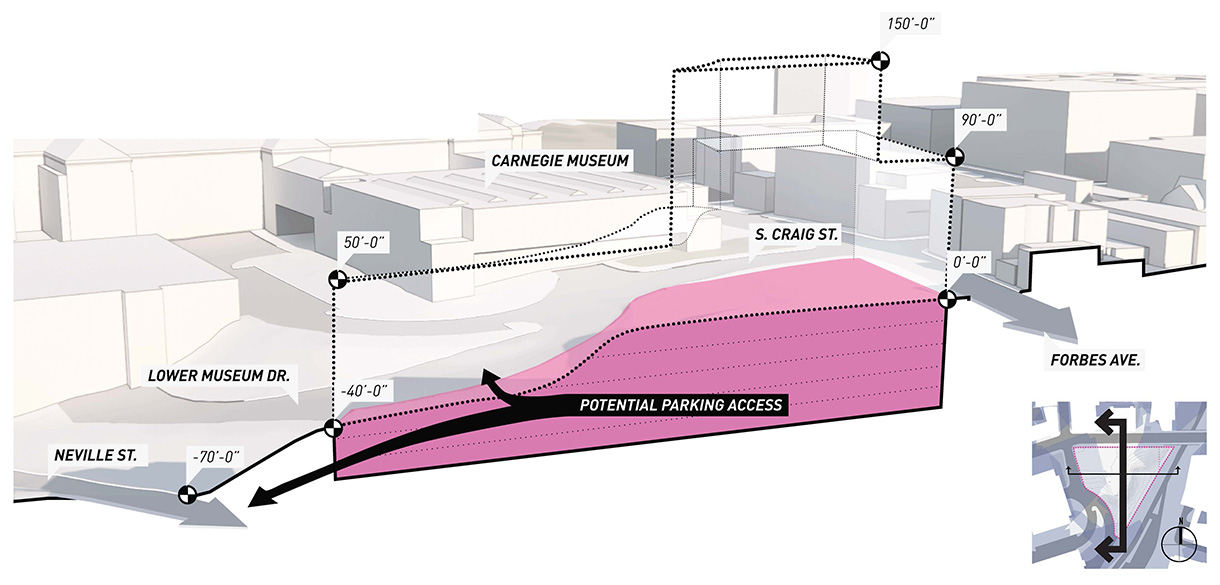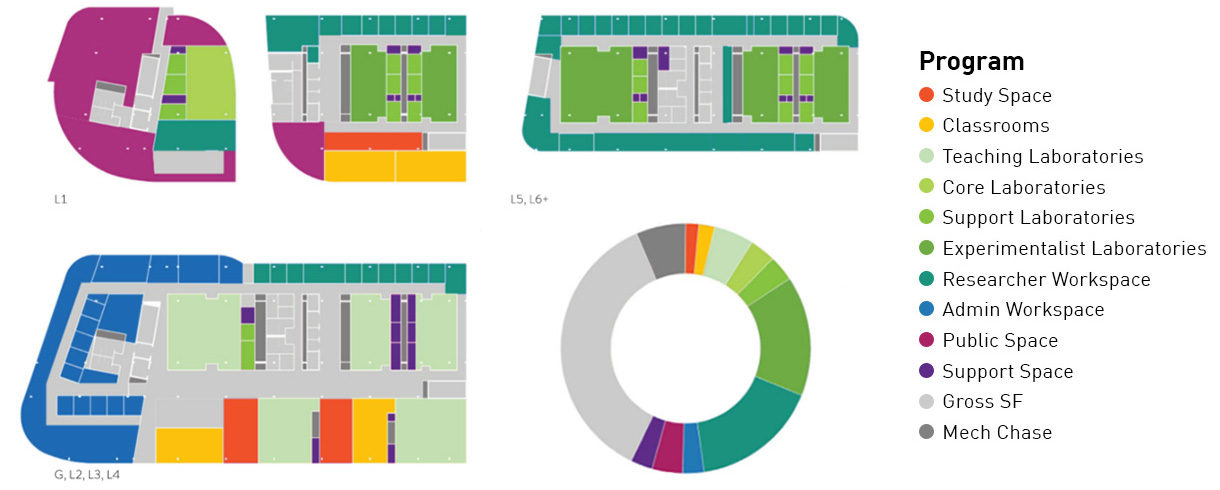Creating a Foundation for the Future of Science
Carnegie Mellon University, Richard King Mellon Foundation Science Building Study
←
To Higher Education
Pittsburgh, PA | 250,000 SF
 Our study helped the client visualize and understand the topographical challenges and opportunities of an irregularly shaped site with multiple zoning restrictions.
Our study helped the client visualize and understand the topographical challenges and opportunities of an irregularly shaped site with multiple zoning restrictions.
Carnegie Mellon University (CMU) students and researchers shape the future by surfacing practical solutions to complex problems. GBBN partnered with brightspot strategy and RFD Lab Planners to help CMU (an R1 research university) align stakeholders around a vision and define the site, budget, goals, program, and requirements for a transformational science building. Embedded in the city of Pittsburgh, CMU sought to study the feasibility of building this new research facility thoughtfully and innovatively on a tight urban site at the edge of central campus.
 Solar analysis helped determine the best strategies for bringing as much daylight as possible into the building.
Solar analysis helped determine the best strategies for bringing as much daylight as possible into the building.
The university is redefining how they approach research, and the new building will bring together several significant research strengths, including computation, artificial intelligence, and automation. To support the cross-disciplinary collaboration they desired, the study helped define a program that could be organized by issues and investigations (like brain analysis and infectious disease) rather than by discipline.
Housing multiple space types— including wet and dry labs, researcher workspace, classrooms, offices, study areas, and public space—the study highlighted opportunities to extend multi-disciplinary collaboration beyond the lab and into social areas. To illustrate how this could take physical shape, we identified different strategies for placing buildings on an irregularly shaped site with topographic challenges and multiple zoning restrictions. Solar analyses helped confirm design approaches to bring natural light into the buildings and to a north-facing public plaza.
The team’s responsiveness in providing design options and critical information, along with clarity of communication…is essential to bringing discussion and consensus to ambitious ideas.
Located at the prominent intersection of Forbes Avenue and Neville Street, the RK Mellon Foundation Science Building will be a gateway building. The study examined how the program, site, and building tie into CMU’s masterplan and make a new building at the edge of campus feel physically and visually connected to central campus and reflect its character.
Planning new research space prior to the building users being identified is a challenge many institutions face. Rather than approach studies with preconceived ideas, we listen and distill what we hear from stakeholders, find consensus among competing interests, and help institutions craft a vision that balances ambition with achievability.
 In collaboration with brightspot, different program layouts were tested and analyzed, which will help the client determine the most efficient final floorplans.
In collaboration with brightspot, different program layouts were tested and analyzed, which will help the client determine the most efficient final floorplans.



